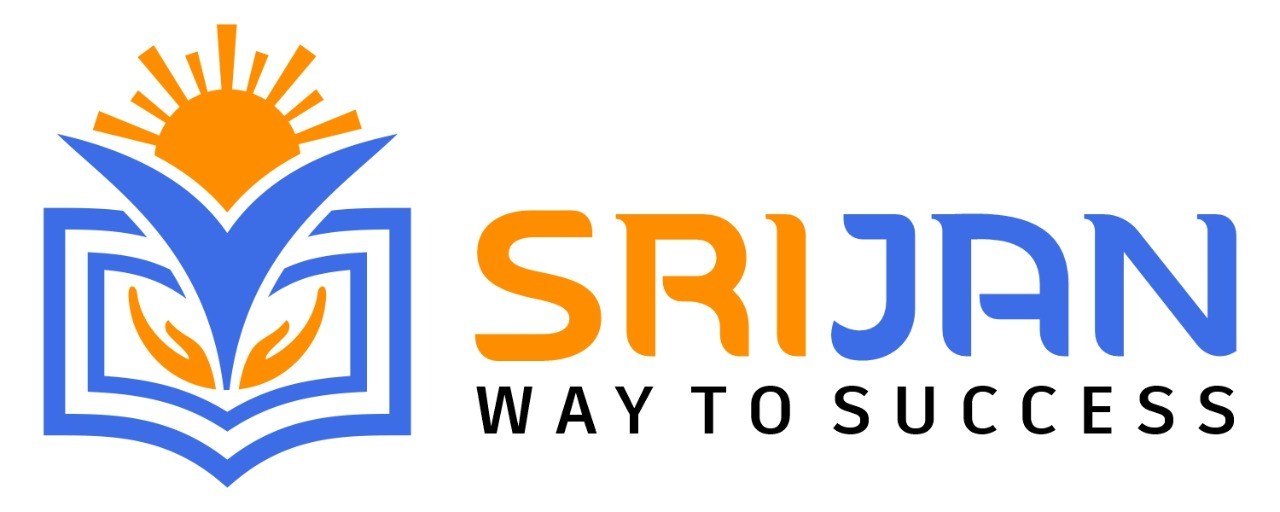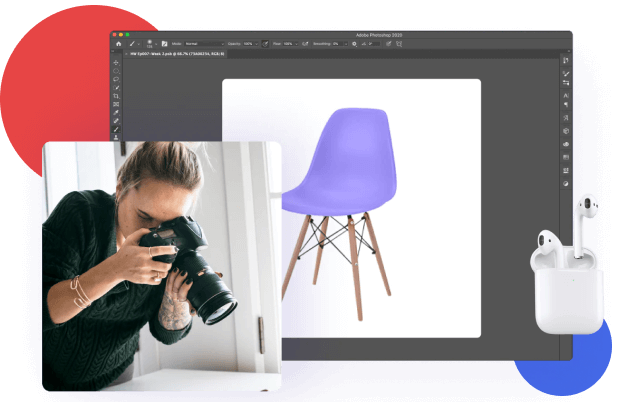SAP PP Online Course: Transform Your Manufacturing Processes
SAP PP Training || SAP PP certification Training || SAP PP Online training || SAP PP self-paced training || SAP PP Instructor-Led training
Key Features of Training:
- 40 Hrs Instructor-led Training
- Mock Interview Session
- Project Work & Exercises
- Flexible Schedule
- 24 x 7 Lifetime Support & Access
- Certification and Job Assistance
SAP PP(Production Planning):
SAP PP (Production Planning) is an integrated module of the SAP ERP (Enterprise Resource Planning) system that helps businesses to plan and manage their manufacturing and production processes. It covers all aspects of production planning, including sales and operations planning, demand management, capacity planning, material requirements planning, shop floor control, and production execution. SAP PP provides a centralized platform for businesses to monitor and control their production processes, optimize their resources, and ensure timely delivery of products to customers. It also integrates with other SAP modules such as SAP MM (Materials Management), SAP SD (Sales and Distribution), and SAP QM (Quality Management) to streamline the entire supply chain management process.
Prerequisites: Who can attend SAP PP Training?
Production Planning and Control
Supply Chain Management
Inventory Management
Material Requirement Planning (MRP)
Bill of Materials (BOM)
Master Data Management
Basic knowledge of SAP ERP system
Good Communication Skills.
Responsibilities of SAP PP Consultant:
Gather business requirements
Configure SAP PP module
Conduct system testing
Train end-users
Provide ongoing support
Ensure data accuracy
Monitor system performance
Collaborate with other teams
Course Benefits
Job opportunities:
Promotion opportunities (Salary Hike):
Increased productivity:
Improved decision-making
Gain in-demand skills
What is future of SAP PP Consultant?
Growing demand
Evolving technology
Digitization of manufacturing
Globalization
Competitive salary
The fee for SAP PP(Production Planning) training can vary depending on several factors such as the location, duration of the course, training format, and level of expertise. SAP offers various training options for MM, including instructor-led courses, e-learning courses, and virtual live classrooms.
For More details you can Register
SAP PP(Production Planning) Certification FAQ's:
1. What is SAP PP certification?
A: SAP PP certification is a professional credential that demonstrates an individual's knowledge and skills in the SAP PP module. It is awarded by SAP SE, the developer of the SAP ERP (Enterprise Resource Planning) system.
2. What are the prerequisites for SAP PP certification?
A: To be eligible for SAP PP certification, candidates must have a minimum of two years of experience in a production or manufacturing environment and should have completed relevant SAP PP training.
3. What are the different levels of SAP PP certification?
A: There are two levels of SAP PP certification: Associate and Professional. Associate-level certification requires passing the SAP Certified Application Associate - Production Planning & Manufacturing with SAP ERP 6.0 EHP7 exam. Professional-level certification requires passing the SAP Certified Application Professional - Production Planning & Manufacturing with SAP ERP 6.0 EHP7 exam.
4. What is the format of the SAP PP certification exam?
A: The SAP PP certification exam consists of multiple-choice questions and is delivered online.
5. How can I prepare for the SAP PP certification exam?
A: SAP offers a range of training courses and materials to help candidates prepare for the certification exam. These include classroom training, e-learning courses, and study guides. Additionally, candidates can find sample questions and practice exams online.
6. What are the benefits of SAP PP certification?
A: SAP PP certification can help individuals demonstrate their expertise in the SAP PP module, enhance their career prospects, and increase their earning potential. It can also provide opportunities to work on challenging projects and gain recognition from employers and peers.
7. How long is SAP PP certification valid?
A: SAP PP certification is valid for two years. After that, candidates must renew their certification by passing a recertification exam or completing a specific number of continuing education units.
8. How long does it take to complete SAP PP certification?
A: The time required to complete SAP PP certification varies depending on the individual's experience and preparation. In general, candidates should allow for several months of study and preparation before taking the certification exam.
9. Is SAP PP certification recognized globally?
A: Yes, SAP PP certification is recognized globally as a standard of excellence in the SAP PP module. It is highly regarded by employers and can enhance career opportunities for individuals working in production planning and control.
10. Can SAP PP certification be earned through online training?
A: Yes, SAP offers online training courses that can prepare candidates for SAP PP certification. However, candidates must still pass the certification exam in order to earn the credential.
SAP PP(Production Planning) Certification:
SAP PP (Production Planning) certification is a professional credential that demonstrates an individual's knowledge and skills in the SAP PP module. SAP offers two levels of certification for SAP PP:
1. SAP Certified Application Associate - Production Planning & Manufacturing with SAP ERP 6.0 EHP7: This certification validates the candidate's basic knowledge of production planning and manufacturing with SAP ERP. The exam consists of 80 multiple-choice questions and has a duration of 180 minutes. The passing score is 60%.
2. SAP Certified Application Professional - Production Planning & Manufacturing with SAP ERP 6.0 EHP7: This certification validates the candidate's advanced knowledge and skills in production planning and manufacturing with SAP ERP. The exam consists of 80 multiple-choice questions and has a duration of 180 minutes. The passing score is 60%.
To be eligible for SAP PP certification, candidates must have a minimum of two years of experience in a production or manufacturing environment and should have completed relevant SAP PP training. The cost of SAP PP certification varies by country and region, but generally ranges from $500 to $2,500 USD. Certification is valid for two years, after which candidates must renew their certification by passing a recertification exam or completing a specific number of continuing education units.
SAP PP(Production Planning) Curriculum:
1. Master Data
Material master configuration and use in production planning
Bill of material (BOM) configuration and use in production planning
Routings (task lists) configuration and use in production planning
Work centre configuration and use in production planning
2. Master Planning
Sales and Operations Planning
Demand Management planning strategies and planned independent requirements
Long-Term Planning
3. Sales and Operational Planning – SOP
Standard Planning
Planning with the Product Groups
Planning with the Materials
Product Group Aggregation and Desegregation
Creation of Plan and version management
Transfer of Plan to Demand Management
4. Planning Material Requirement
Master Production Scheduling procedure
Consumption based planning (re-order point planning, forecast-based & Time-phased)
Material requirement planning run configuration
Material requirement planning evaluation tools
5. Batch Management
Condition Tables
Access Sequence
Strategy Types
PP Batch Search Procedure
Batch Status in PP
Characteristics and class
SLED In Batch in PP
Manual And Automatic Batch Display In PP
Production orders creation using Batch
6. Variant Configuration in BOM and PP
Characteristics
Class
Classification
Classification settings in material master
Maintain Dependency
Configurable Profile for Material
7. Availability Check
Availability Check with ATP Logic or Against Planning
Capacity Planning
Capacity planning master data components
Capacity planning scheduling parameters
Available capacity determination
Capacity evaluation
8. Production Orders
Scheduling of production orders
Production order components
Production Resources & Tools (PRT's)
9. Discrete Manufacturing
Planned order structure
Production order types
Material staging and withdraw
Production confirmation
Goods movements
Goods Receipt WREF to Production Order
Goods Issue WREF to Production Order
Creation of GI WREF to Reservation
Restricting Goods Receipt Unless Production Order is Confirmed
Order settlement
10. Repetitive Manufacturing
Master Data
Planning
Planning Table
Pull List material staging
Back flushing
REM Backflushing
11. Reporting & Tools
Production planning reporting
Material requirement planning reporting
Maintenance of master data using mass change function
12. Integration of pp with other modules
MM
SD
QM
WM
FI
SAP PP(Production Planning) Interview Questions & Answers:
1. What is SAP PP?
A: SAP PP (Production Planning) is a module in the SAP ERP (Enterprise Resource Planning) system that is used to plan and manage production processes. It is used to create production plans, manage materials, and schedule production orders.
2. What are the different types of planning in SAP PP?
A: The different types of planning in SAP PP are Demand Management, Material Requirements Planning (MRP), Capacity Planning, and Production Planning.
3. What is MRP in SAP PP?
A: MRP (Material Requirements Planning) is a process in SAP PP that is used to determine the materials that are required to meet the production requirements. It considers the production plan, inventory levels, and other factors to generate a list of materials that need to be procured or produced.
4. What is a BOM in SAP PP?
A: A BOM (Bill of Materials) is a list of all the components and sub-assemblies required to manufacture a finished product. It is used in SAP PP to create production orders and to calculate the material requirements for production.
5. What is capacity planning in SAP PP?
A: Capacity planning is a process in SAP PP that is used to ensure that the production process has enough capacity to meet the production requirements. It considers factors such as the availability of resources, the production plan, and the capacity utilization to determine the capacity requirements.
6. What is a work center in SAP PP?
A: A work center is a physical location in SAP PP where production activities take place. It represents a machine, a group of machines, or a manual work station where production activities are carried out.
7. How do you create a production order in SAP PP?
A: To create a production order in SAP PP, you need to go to the Production Order screen and enter the relevant details such as the material, quantity, and production start date. You also need to specify the work center and the BOM that will be used for production.
8. How do you monitor the progress of a production order in SAP PP?
A: You can monitor the progress of a production order in SAP PP by going to the Production Order screen and checking the status of the order. You can also use the Shop Floor Control (SFC) system in SAP PP to monitor the progress of production activities in real-time.
9. What is the integration between SAP PP and other SAP modules?
A: SAP PP is integrated with other SAP modules such as MM (Materials Management), SD (Sales and Distribution), and FI (Financial Accounting). The integration ensures that data flows seamlessly between the modules and that the production planning process is integrated with other business processes.
10. What are some of the challenges in SAP PP implementation?
A: Some of the challenges in SAP PP implementation include ensuring data accuracy and consistency, customizing the system to suit business requirements, and ensuring user adoption and training.
11. What is the difference between make-to-order and make-to-stock production?
A: Make-to-order production is a type of production in which products are manufactured based on customer orders. In this type of production, the product is only produced when an order is received, and the production process is initiated only after the customer order is confirmed. Make-to-stock production, on the other hand, is a type of production in which products are manufactured in advance and kept in stock. These products are produced based on a forecast of the demand, and are available for immediate delivery to customers.
12. How does SAP PP integrate with quality management?
A:SAP PP integrates with Quality Management (QM) through the Quality Inspection process. In this process, the materials are inspected at various stages of the production process to ensure that they meet the quality standards. The results of the inspections are recorded in SAP QM, and are used to track the quality of the materials and the production process.
13. What is a routing in SAP PP?
A: A routing is a sequence of operations that are required to produce a product. It defines the order in which the operations are to be performed, the work centers where the operations are to be performed, and the time required to perform each operation. Routings are used in SAP PP to create production orders and to schedule the production process.
14. What is the difference between a planned order and a production order in SAP PP?
A: A planned order is a type of order that is used to plan the production process. It is created based on the material requirements generated by the MRP process. A production order, on the other hand, is a type of order that is used to initiate the production process. It is created based on the planned order, and specifies the details of the production process such as the material, quantity, and work center.
15. How do you configure a work center in SAP PP?
A: To configure a work center in SAP PP, you need to enter the relevant details such as the name, description, capacity, and availability of the work center. You also need to specify the cost center, the machine or equipment used at the work center, and the calendar that defines the working hours for the work center.
16. What is a production version in SAP PP?
A: A production version is a unique combination of a material and a BOM that is used for production. It is used to differentiate between different versions of the same product that are produced using different BOMs or using different production processes.
17. What is a lot size in SAP PP?
A: A lot size is the quantity of a material that is produced in a single production run. It is used in SAP PP to calculate the material requirements for production, and to determine the production schedule.
18. How do you monitor the inventory levels in SAP PP?
A: You can monitor the inventory levels in SAP PP by using the Material Requirements Planning (MRP) process. The MRP process calculates the material requirements based on the production plan, and compares it with the available inventory levels to determine the procurement or production requirements.
19. What is the difference between a production order and a process order in SAP PP?
A: A production order is used for discrete manufacturing, where a finished product is produced by assembling different components. A process order, on the other hand, is used for process manufacturing, where the raw materials are transformed into a finished product through a series of chemical or physical processes.
20. How do you use the capacity planning tool in SAP PP?
A: To use the capacity planning tool in SAP PP, you need to define the capacity requirements for the production process. You can do this by specifying the work centers, the production orders, and the production times for each operation. The capacity planning tool will then calculate the capacity utilization and identify any bottlenecks in the production process
Participants will have 24/7 access to our online lab, providing hands-on experience with SAP PP tools and scenarios.
This includes server access to S/4 HANA 2023 for 1 year, ensuring you have ample time to practice and apply your skills in a real-world environment.
With this extended access, you can work on projects, explore advanced features, and solidify your understanding of SAP PP in the latest SAP S/4 HANA version.















